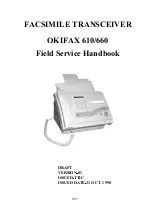
9
Operate your sewing machine
Lid
Open the folding lid (7) upwards. The
stitches of the sewing machine are
illustrated on the inside of the lid.
Connecting the foot control
Connect the plug of the foot control to
the connecting socket (2) of the sewing
machine and to the wall socket. The
sewing speed is regulated by pressing the
foot control.
You can regulate the sewing speed by
moving the slide on the front part of the
foot control.
Position = half speed
Position
= full speed
AE023 - 120V, USA and Canada
AE020 - 230V, Europe
AE024 - 240V, Australia
Main switch
When the main switch (1) is switched on,
the sewing bulb lights up. The sewing
machine is now ready to use.
For the USA and Canada
This appliance has a polarized plug
(one blade wider than the other). To
reduce the risk of electric shock, this
plug is intended to
À
t in a polarized
outlet only one way. If the plug does
not
À
t fully in the outlet, reverse the
plug. If it still does not
À
t, contact
a quali
À
ed electrician to install the
proper outlet.
DO NOT modify the plug in any way.
Summary of Contents for select 150
Page 1: ...Owner s manual ...










































